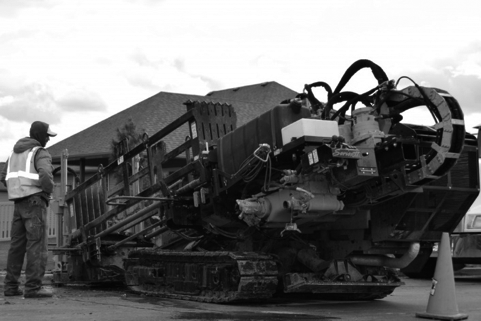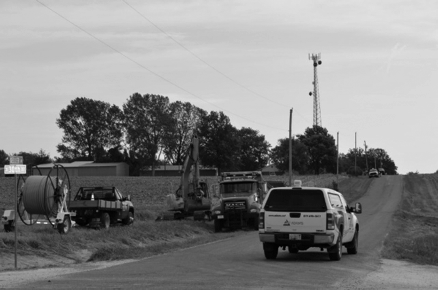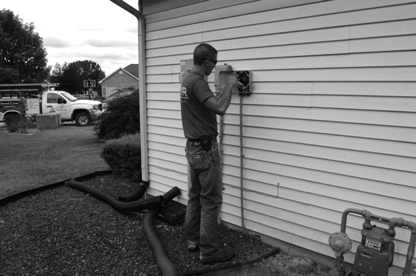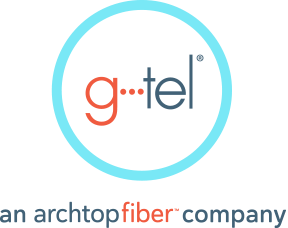What to Expect – Construstion
While you wait, we get busy. What to expect from construction of GTel Fiber.
Timing is everything.
Our goal is to bring you GTel Fiber service as quickly as possible. But there is a lot of preparation that takes place before we can connect every home in our expanding territory. That’s why we’ve created the sign up process through our gtelfiber.net website. Once you’ve filled out an interest form, you will receive notifications when the status of your zone changes and progress closer to installation. We start by engineering the build area and when construction is ready to move forward, we change the status of the zone and notify you. This process occurs through several phases, each of which you’ll receive a notification.
Once construction is complete and the network is connected, we’re ready to get you signed up!
During the “Sign Up” phase you can pre-register, and choose your services. It is also a period of time that determines the level of commitment by a prospective Fiberhood. After we reach our commitment requirements, the sign up period closes. If your Fiberhood has met its goal, we’ll contact you with an estimate for when you can expect our technicians to begin installations. You can then pick a day and time that best fits your schedule, and voila, you’re on GTel Fiber!
Many outlying factors such as weather conditions and geography can impact our timing to provide you service, resulting in a longer wait timeframe than we may have originally anticipated. Below explains our construction process between the time you sign up and the time we can install GTel Fiber inside your home.

Building a brand new network takes time.
We’re placing brand new fiber optic cables in the ground or on utility poles in our current serving area and beyond. This takes a fair amount of time to map and place the fiber. Consider how many miles of streets are in your neighborhood. We’ve made a commitment to completely cover the townships of Germantown, Clermont, Livingston, Gallatin and Taghkanic with GTel Fiber. That’s over 260 new miles of fiber added to our already extensive fiber network. That’s about the distance from Germantown to Atlantic City! That’s a lot of ground to cover, one foot of fiber at a time.
Before we invite you to sign up for GTel Fiber, we spend a lot of time developing a construction plan for your community and working with local authorities on permitting and other requirements. Once a Fiberhood qualifies for fiber service, there is more design, engineering and staking work to be done.

Underground investigation.
Before we can lay fiber optics in the ground or bring in construction equipment such as boring machines or trenchers, we first figure out where the existing underground utilities are—wires, pipes, water lines, etc. We follow the required process for marking the locations (“locates”) where each utility is supposed to be. These locating processes are put in place by our local Call Before You Dig, Dig Safely New York. This helps our construction crews when they are digging. You might see orange, blue, red, or yellow paint on sidewalks, streets, or even on your grass. Those are locating marks and help us to dictate where the fiber will be placed.
Private property access rights.
Franchise agreements, which are issued by a state or local government, give us the right to build our network in public rights-of-ways and easements in a particular jurisdiction. Where applicable, we separately secure the rights to construct on private property, such as in a multi-family apartment building, in a gated community, or across a private road.
Utility poles examination.
Before we can pull fiber to utility poles and begin any aerial work, we determine if there’s space for our fiber on existing poles. Specific regulations and contractual obligations exist for placement of equipment on utility poles and may require coordination with third parties.
Construction can be disruptive.
Most construction work is disruptive in some way or another. GTel attempts to minimize disruption for the city and its residents as much as possible.

Hurry up and wait.
Even under the best of circumstances, some things can slow us down that are out of our contro, such as:
- Weather, weather, and more weather. We still work outside when the weather doesn’t cooperate, but sometimes it’s just impossible. Consider when you notice most road construction. You see more of that in spring and summer than in fall or winter. Usually, you won’t see road construction on snowy or rainy days. This pattern is similar for Fiber construction. Nearly everything stops or slows down in bad weather, including fiber network construction
- There’s just not enough daylight sometimes. Construction permits are usually only valid for certain days of the week and may limit times of the day crews can work. We might have enough crews to work longer days or over the weekends, but we must comply with local restrictions.
Your neighbor might get fiber installed before you.
Occasionally, one or two homes on a street don’t get installed until weeks or months after the rest of the street is installed. This can be confusing to residents, and your patience is always appreciated. There are a couple of reasons this might happen:

- Property access may be an issue. Sometimes we’re unable to access the property for some reason.
- Installation differences may occur. A few houses in a neighborhood can have underground cables while the rest of the houses in that neighborhood may have overhead cables. In that case, the houses with underground cables are usually installed later than the rest due to the planning and preparation needed before the installation can occur.
- Unforeseen circumstances can arise. We wish we could prepare for every unexpected obstackle, but sometimes there are unique conditions at a partifular address that affect our ability to install GTel Fiber.
We strive for efficiency.
Although we practice efficient processes, we still run into roadblocks and delays. We have learned a lot since our first fiber-to-the-home buildout in 2009 and have streamlined as much as possible in our construction process. For example:
- We build out with strategically, deploying resources where they can be put to work. Rather than having to go from Street A to Street B, we can build Street K and then H and then Q, if that makes more sense, and then connect them as we get adjacent streets completed. This means we can bypass streets that may need more work or preparation from other utilities before we can place our fiber cables. That helps us to keep moving forward, keeps our crews busy, and makes the whole process go as quickly as possible.
- We have designed the Fiberhood sign-up and construction process to maximize efficiency. This means we stick to our sign-up deadlines so that we can build in a particular Fiberhood and then move on to work in another Fiberhood. This is why it’s important for residents to get signed up at the right time. We generally say there is a two-month timeline from the day the zone is moved into Sign-up Phase before it is moved into Fiberhood Phase.
- We plan in advance and coordinate with local utilities and townships as much as possible, so we’re ready to start installations as soon as the Sign-up Phase closes.

